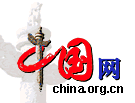Holidays and Observances:
1: April Fool's Day.
4: Pure Brightness Festival (Tomb-sweeping Day). Marks the 5th seasonal division point and usually falls on April 4 or 5; a traditional festival for commemorating the dead, 1 day off.
5: Flower Fair of the Nu ethnic group (also called Fairy Maiden's Festival) held on the 15th day of the 3rd lunar month. The Nu people living around Gongshan, Nujiang Prefecture, Yunnan Province, dress in costumes adorned with flowers and offer blossoms to the stone statue in the Fairy Maiden Cave on Mount Gaoligong. A party inside the cave features food and drink, and song and dance follows.
5-10: Annual Fair of the Bai People, held at the foot of Diancang Mountain to the west of Dali city in Yunnan. Primarily a trading fair that lasts from the 15th to the 20th of the 3rd lunar month, peripheral activities include horseracing, archery contests, and music and dance performances.
7: World Health Day. The day coincides with the anniversary of the establishment of the World Health Organization on April 7, 1948. Its objective is the attainment by all peoples of the highest possible level of health in physical, mental and social well-being terms, but not just the absence of disease or infirmity.
8: Easter Day is observed on the first Sunday after the full moon that occurs next after the vernal equinox.
9: Mountain Climbing Festival held on the 19th day of the 3rd lunar month, a chance for young Miao people in Guizhou Province to meet and greet each other. Young men and women climb mountains, sing and dance to get acquainted.
11: Worship at Genghis Khan's Tomb, held by the Mongolian ethnic minority four times a year, on the 21st of the 3rd lunar month, 15th of the 5th lunar month, 12th of the 9th month and 3rd of the 10th month. Activities on the day of worship also include horseracing.
13: Birthday of Mazu, goddess of the sea. In the days immediately before and after the 23rd day of the 3rd lunar month, people in southeast China's coastal areas honor the goddess with celebrations and rituals.
13-15: Water-Sprinkling Festival, the New Year celebration of the Dai ethnic group in Yunnan, and their most splendid festival. The celebration is usually held between April 13-15, with people sprinkling water over each other as a token of blessing. Among the young, the sprinkling often escalates into splashing and sometimes complete drenching. Other activities include dragon boat racing and fireworks.
22: Earth Day. With the push by the environment-conscious Senator Nelson who proposed a special day to teach everyone about the things that needed changing in our environment, on April 22, 1970, the first Earth Day was held. People all over the country made promises to help the environment and since then Earth Day has spread all over the world and was then recognized as an international day.
23: World Book and Copyright Day.
28: Yanu Festival. On the 8th day of the 4th lunar month, the Miao people of south and central China commemorate their hero, Yanu. Major activities include dancing to drum and lusheng (a type of mouth organ), climbing blade ladders and eating glutinous rice. |


